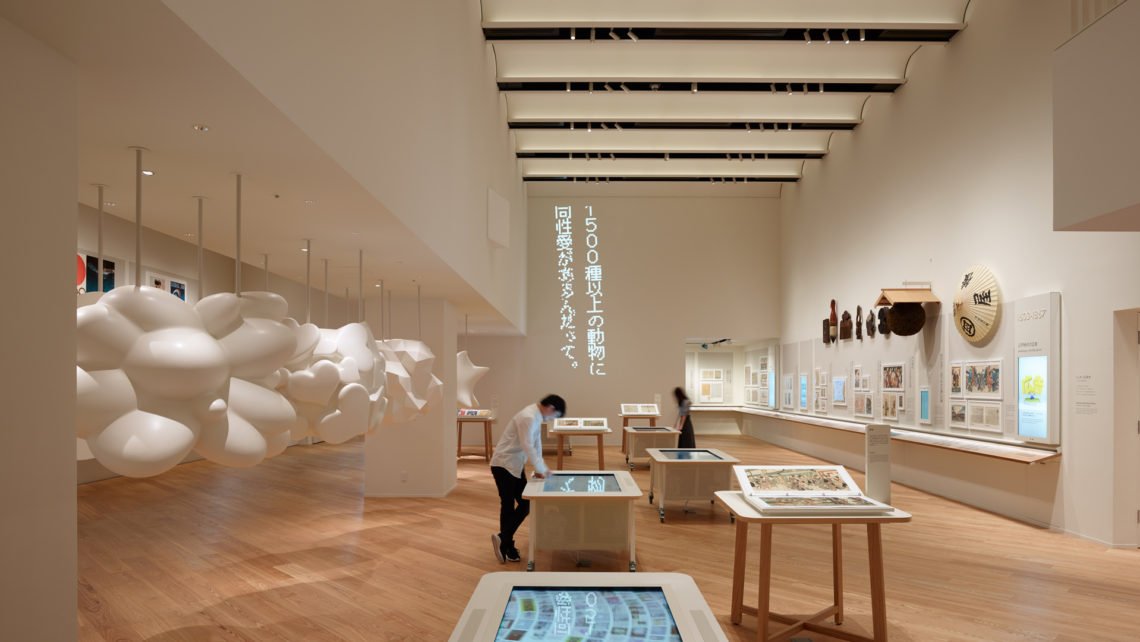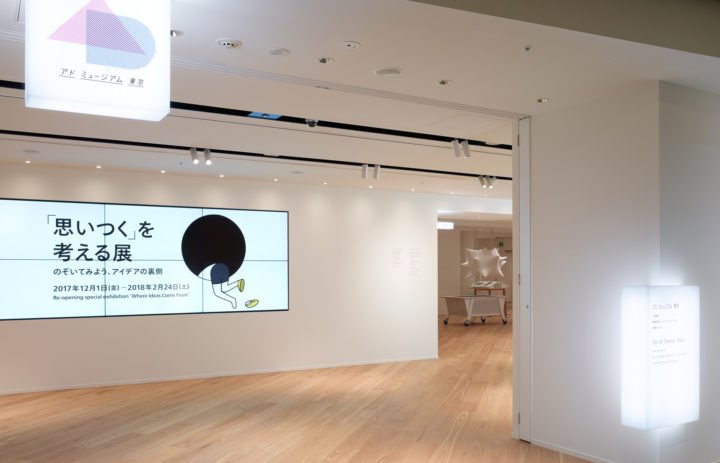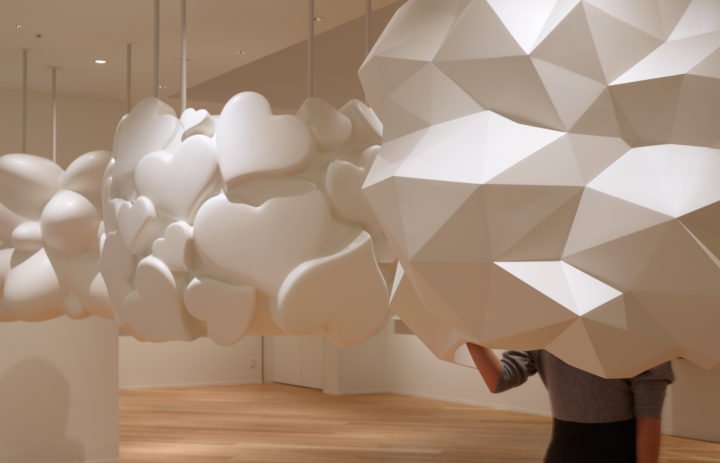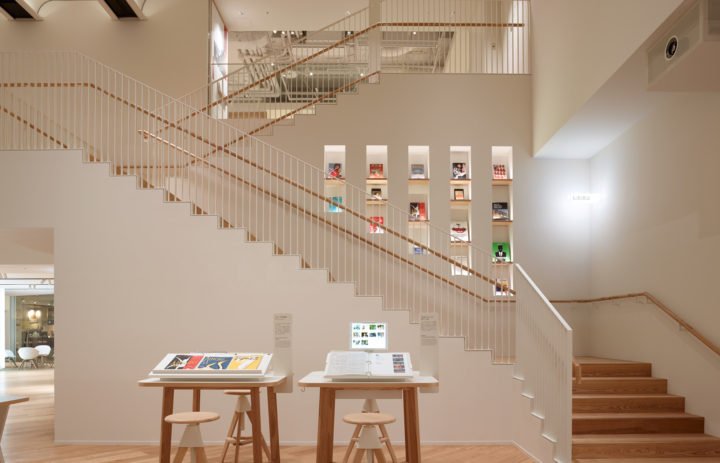It’s everywhere thus we are exposed to them all the times. So what do we really find in thousands of advertisements? It may be a perfect mixture of reflections from our history, culture, arts, and who we are. Although some may argue that advertising messages are just to sell products or service and have not much value to be archived, by looking through interesting and unique pieces shown at the Ad Museum Tokyo, will certainly change the negative perception toward advertising.
Located in the center of Tokyo, the Ad Museum Tokyo, is a must-visit place among advertising professionals and enthusiasts. If you find yourself in Japan, do plan a visit to the Ad Museum Tokyo and have fun interacting with its wonderful exhibitions. The good ads help to sell what people need while the great ads remind people what they cherish.
The Ad Museum Tokyo (TAMT): The Ad Museum Tokyo is the only museum in Japan dedicated to the promotion of studies in, and popular understanding of, advertising and marketing.
TAMT: Open, inspirable, Unique
TAMT: The Ad Museum Tokyo reopened in December 2017. That was a major milestone. It used to cater to people primarily in the advertising and marketing industries, and it was renovated as a museum for everyone to enjoy. The new museum is a wide open space that will make people more cheerful and relaxed. We hope to maintain a museum that continues to evolve in line with the times and keeps delivering fresh discoveries to people.
TAMT: We have permanent exhibitions and temporary exhibitions.
Peter Drucker once said, “marketing originated in Japan in the Edo period.” The “Japanese advertising history” in the permanent exhibition area introduces a history of advertising from the Edo period to the present. Visitors to this area will find advertising from a whole new perspective, such as the relationship between society and advertising and changes in the advertising. The permanent exhibitions also have “audiovisual booth” that introduces timeless advertisements that stir up people’s hearts and “collection table” with approximately 2,000 items on display.
The temporary exhibitions include creative awards winning ads from Japan and overseas, along with original presentations that show potentials of “communication” and “creativity” in the broad sense regardless of specific areas of advertising.
TAMT: Ads can be more than just ads.
Fresh Discoveries Await
Advertising in all its many forms often expresses
the universally funny, endearing side of human nature,
and offers an emotionally moving treasury of ideas.
Laughter and tears; astonishment and empathy.
The things which touch us emotionally
are connected at their roots, transcending time.
We hope that through this wealth of advertising,
the work of many people,
you may encounter new ideas and fresh discoveries.
Advertising – It really is fun!
TAMT: We want to offer fresh discoveries through exhibitions that are easy to understand as well as enjoyable. We want to offer tips for communication. We want to make certain that we are not narrow-minded.
TAMT: Our materials from the Edo period reveal a pioneering technique of marketing in the world. Our exhibitions present a new way of interpreting history. For instance, the nishiki-e, which is often treated as an art, is introduced under the “advertising communication” heading.
TAMT: The students will discover numerous clues in past works and examples. Ideas that may seem modern could have been envisioned by someone in the Edo period. We sincerely hope that they stay clear of the “why study old stuff in history” attitude and discover ideas that are hidden in history before leaving the museum.
TAMT: Special exhibition “GOOD Ideas for GOOD”
TAMT: Soundproofing. Sounds of events from the permanent exhibition area sometimes reverberate.
TAMT: If you go over the history of advertising from the Edo period to the present, you will find a glimpse of how Japanese culture has changed over the years. For instance, a Western style dress that was never found in the Edo period can be spotted in advertisements in the Meiji to Taisho periods. Baseball games and posters of movie stars became popular in the postwar reconstruction period.
Visitors to the museum will have a chance to discover Japan’s uniqueness that results from the integration of foreign culture with Japan’s native culture.
TAMT: Their first reaction is a surprise of finding that thousands of items and quality displays are being offered free of charge. We have heard from many visitors that they found many hints for new ideas and that they came to understand Japan from an entirely different perspective.
TAMT: Communication is the base of advertising, and advertising is the reflection of the times. We hope to convey the timeless importance of communication and present new potentials of advertising communication and creativity. We also hope that the museum will keep growing together with the visitors by exchanging ideas.
TAMT: We are planning a special temporary exhibition for the year of Tokyo 2020. We hope it will be one dedicated to sharing the potential and joy of advertising communication and creativity with the visitors.
TAMT: We are putting effort into active learning in particular from an educational point of view.
TAMT: Some people may think “advertising” is unimportant as they are not interested in it. The Ad Museum Tokyo offers many fun items for people who may not be interested in advertising. All exhibitions are carefully displayed in an easily accessible, low-hurdled style. Once visitors stand in front of displays, they will be tempted to take a closer look, think harder and want to learn more.
What are some of the challenges or surprises you’ve faced in overseeing various exhibition programs?
TAMT: The theme of the “GOOD Ideas for GOOD” exhibition was sharing with the visitors certain social issues that were unknown even to the media. “Social Good” is a theme that many people are interested in. Yet, it tends to be thought of as being self-assertive. We managed to choose right contents, compose displays and design space in such a way that the visitors would acquire a new awareness without even knowing it. As a result, we were able to establish a very good reputation.
TAMT: The museum is compact in size but we think the visitors will be impressed by the relatively large, relaxing space, the audiovisual booth “Four Feelings” and “Collection Table.” All in all, the Ad Museum Tokyo is a museum for the visitors not only to look around but to touch and feel as well.
TAMT: Look, touch and enjoy. The touchscreen monitor lets the visitor take a closer look at ads of interest ranging from his/her favorite ads from the past to the amazing work of art. Visitors to the museum will find thousands of items in digital and analog worlds including the signboards that were actually used in the Edo period.
TAMT: All displays have captions in English language. We are also planning a “mini tour with an English-speaking guide” for visitors from overseas.
TAMT: You will definitely enjoy the Ad Museum Tokyo’s special exhibition in 2020.
- Photos courtesy of the Ad Museum Tokyo













